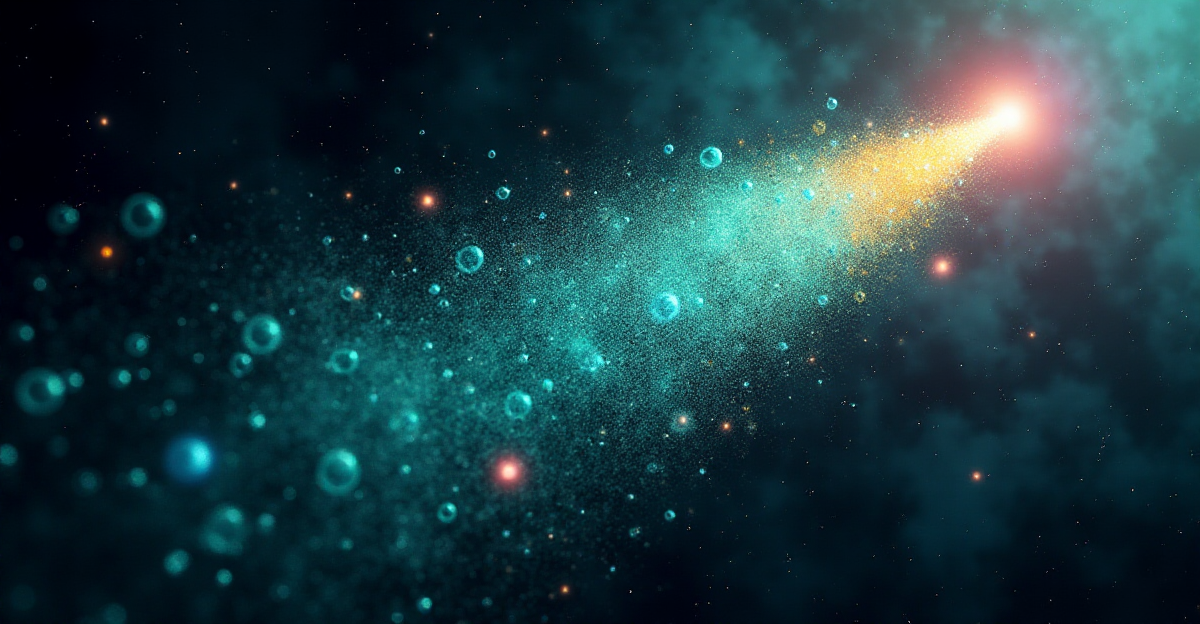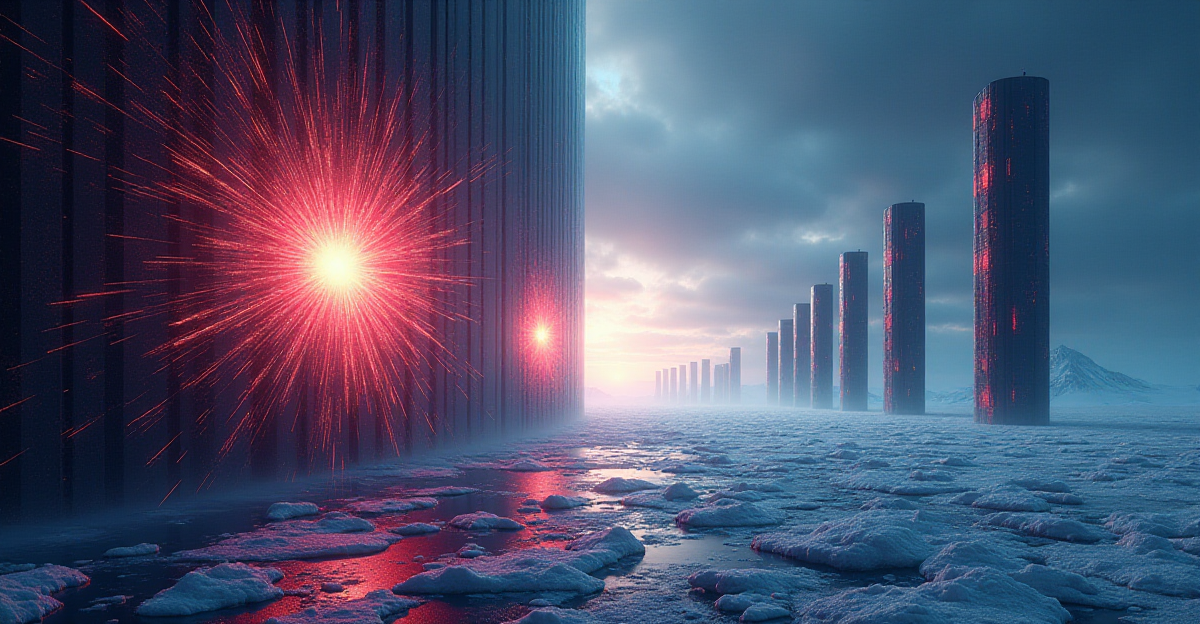Among the most plentiful particles in the universe, neutrinos are also quite elusive and travel through matter virtually undetectably. This page clarifies these ghost particles, showing how our knowledge of physics has evolved from solar activities to supernova explosions. Visiting an underground neutrino detector let me see the scope of research required to find these transient particles. We will discuss neutrino oscillations, their function in the universe, and how research of them can help to solve some of the most important physics problems including the matter-antimatter asymmetry. This work seeks to provide the invisible world of neutrinos physical form and intriguing appeal.
Table of Contents
What Are Neutrinos?

Have you ever pondered what makes up the great world we live in as you gaze up at the nighttime heavens? Protons, neutrons, and atoms are known; however, what about the unseen forces maintaining everything together? The neutrino particle is among the most fascinating and enigmatic in the universe. Although these little, elusive particles abound, they are particularly difficult to detect since they hardly interact with matter. The reality we live in is one whereby we can only perceive a small portion of what is truly happening! Like unseen messengers delivering knowledge about some of the most potent occurrences in the cosmos, neutrinos
Understanding Neutrinos
Neutrinos are subatomic particles with nearly no mass. From nuclear events in the sun to supernova explosions to particle accelerators, they are created in a range of ways and travel almost at the speed of light. Although they are “the most abundant particle in the universe,” their elusive character makes study of them quite difficult.
Detecting Neutrinos
How then do we even investigate these enigmatic particles? You might be asking. Designed especially to record the uncommon interactions neutrinos have with matter, scientists all around have constructed enormous underground detectors such the IceCube Neutrino Observatory in Antarctica and Super-Kamiokande in Japan. Imagine enormous tanks loaded with ice or water just waiting for a neutrino to strike an atom and produce a flash of light. By enabling researchers to investigate their characteristics, these neutrino detectors have produced several revolutionary findings including the phenomena of neutrino oscillation.
Neutrino Oscillation: A Cosmic Mystery
A mind-boggling phenomenon, neutrino oscillation is the process by which neutrinos change their characteristics—more especially, their flavor, as they travel. Imagine it as a coin flinging in the heavens. Upon landing, it may either be heads or tails. Though they have three flavors— electron, muon, and tau—neutrinos are comparable. Because it could help explain why we have a universe dominated by matter rather than antimatter, neutrino oscillation is especially significant. Originally, scientists thought the cosmos was formed with equal quantities of matter and antimatter. Still, we find a universe ruled by matter. Knowing neutrino oscillation is essential since it will enable us to explain our matter-dominated universe’s reason.
Neutrinos and their Real-World Applications
From a scientific standpoint, neutrinos are interesting; yet, they also find practical use. They can be investigated, for instance, inside the Earth. Imagine creating a thorough map of the mostly undiscovered Earth’s core using neutrinos. Neutrinos find use even in nuclear reactor monitoring. The neutrinos generated in nuclear reactors guarantee their safety and enable our knowledge of the mechanisms running inside them.
The Universe’s Unseen Messengers
A monument to the breadth and intricacy of the cosmos are neutrinos. They serve as a reminder of how much more we still have to learn and of the never-ending path that knowledge-seeking travels. We grasp the universe and our role within it better the more we know about neutrinos. We should anticipate fresh understanding of the nature of reality itself as scientists keep solving the riddles of these ghost particles.
Neutrino Detection and Experiments

Little subatomic particles known as neutrinos are continuously flying through you. These ghost particles can flow through whole planets undetectably because they are so minuscule and interact so weakly with matter. It may surprise you to find that researchers have been trying to reveal their secrets for decades. Research on neutrinos is an interesting but demanding discipline.
Catching the Elusive Particles
Scientists have developed original particle detection experiments to investigate neutrinos. One well-known instance is the Antarctica’s IceCube Neutrino Observatory. Could one envision a detector made by a cubic kilometer of ice? Imagine a neutrino journeying across space and at last coming across an atom buried deep in Antarctica. A neutrino interacting with that atom produces a weak burst of light. Detectors dispersed over the ice take up these lights exposing the neutrino.
Another outstanding illustration of particle detection technology is the Super-Kamiokande detector used in Japan. There are 50,000 tons of pure water filling this subterranean detector. One detects a small flash of light when a neutrino interacts with an atom in the water. These detectors are genuinely amazing engineering achievements that let us see the invisible world of neutrinos.
Unlocking the Mysteries of the Universe
Investigating neutrinos, especially neurutrino oscillation, scientists have discovered amazing revelations. This mechanism makes neutrinos even more enigmatic as they travel by flavor shifting changes. To address some of the most important topics in astrophysics, including why the cosmos is composed largely of matter rather than antimatter, one must first grasp neutrino oscillation.
A wonderful phenomena is neutrino oscillation. Like a chameleon changing its hue. Imagine you could see these invisible particles; their flavor would be always shifting as they moved. Neutrinos enable us to grasp the nature of the universe and offer insightful analysis of astrophysics. Furthermore surprising is the use of neutrinos by scientists to investigate the mostly undiscovered deep interior of the Earth. This is like peering inside our own planet with a telescope! Constant testing our knowledge of the universe, the study of neutrinos is an interesting discipline.
Neutrinos in the Cosmos

Have you ever considered the secrets buried across the great distances of the cosmos? Imagine a world in which considerably smaller than atom unseen particles move almost at the speed of light. These are neutrinos, elusive ghost particles continually streaming across space.
Because of their weak interactions with matter, these subatomic particles—despite their abundance—are famously difficult to detect. They arise in a range of cosmic phenomena, from nuclear processes in stars to the explosive bursts of supernovae to even in particle accelerators here on Earth. Consider them as messengers bringing knowledge about the very fabric of our planet from the most potent events in the universe. But how do researchers investigate these evasive particles?
Scientists have planned complex tests to catch a sight of these phantom particles. These tests make use of large subterranean detectors as the Super-Kamiokande detector in Japan and the IceCube Neutrino Observatory in Antarctica. Imagine enormous water or ice tanks just waiting for a neutrino to hit with an atom and leave their mark. One noteworthy discovery event, IceCube-170922A, happened in 2017 when the IceCube Observatory found a neutrino with very great energy. This event originated in a blazar, a strong galaxy with a supermassive black hole in its core. This finding marked a turning point in particle detection and gave vital new understanding of the most energetic events in the cosmos.
Beyond their evasive character, neutrinos have unveiled amazing truths. As neutrinos move through space, did you know their kind can change? Known as neutrino oscillation, this amazing phenomena has important ramifications for our knowledge of astrophysics and may help explain why matter rather than antimatter rules our cosmos. A wonderful trip into the center of the universe, neutrino research provides a window into the secrets buried within the cosmos.
Extra’s:
If you are interested in learning more about the fascinating concepts of time and space, you might find our post on “Time Dilation: A Journey Through Einstein’s Relativity” particularly insightful. It delves into the mind-bending consequences of Einstein’s theories, which are closely intertwined with the nature of particles like neutrinos. For those intrigued by the enigmatic world of fundamental forces, our post on “In Search of the Elusive Magnetic Monopoles” explores the hunt for these hypothetical particles, which could revolutionize our understanding of magnetism and the universe.
To gain further insights into the world of neutrinos, you can explore the “List of neutrino experiments – Wikipedia” page. This comprehensive resource details various experiments designed to study these elusive particles and unravel their secrets. For a deeper dive into the theoretical framework surrounding neutrinos, the “The standard model of particle physics. Neutrino oscillations – ScienceDirect” article provides a detailed explanation of the Standard Model and neutrino oscillations, which play a crucial role in our understanding of particle physics.












1 thought on “Neutrinos: The Ghost Particles of the Universe”